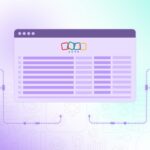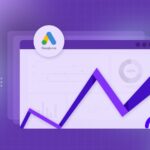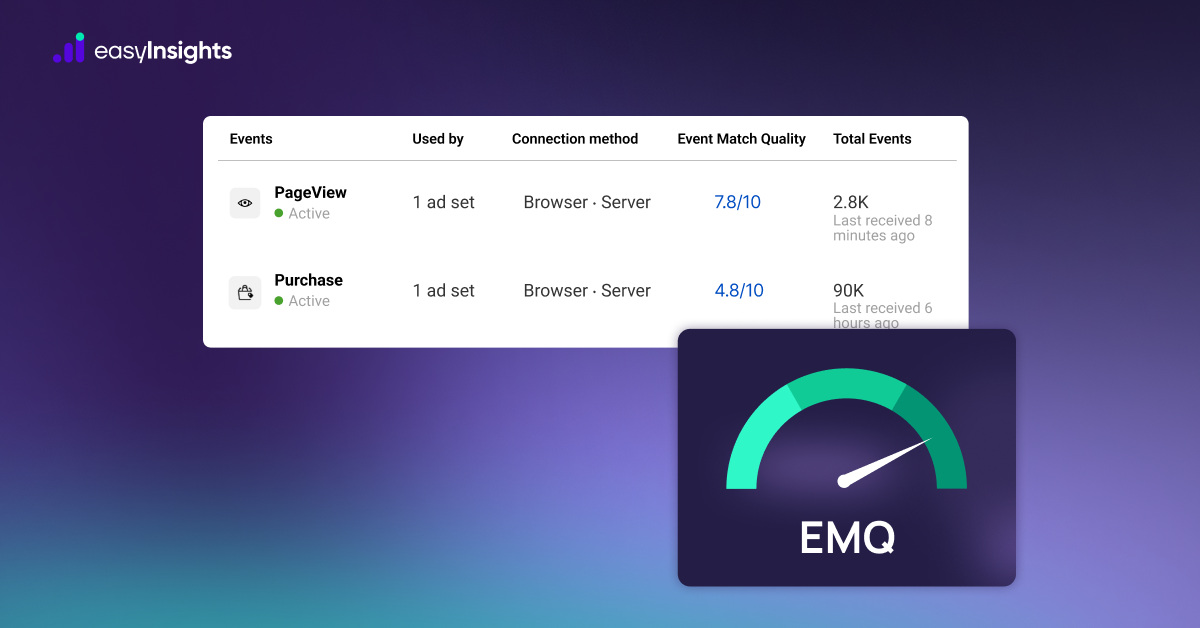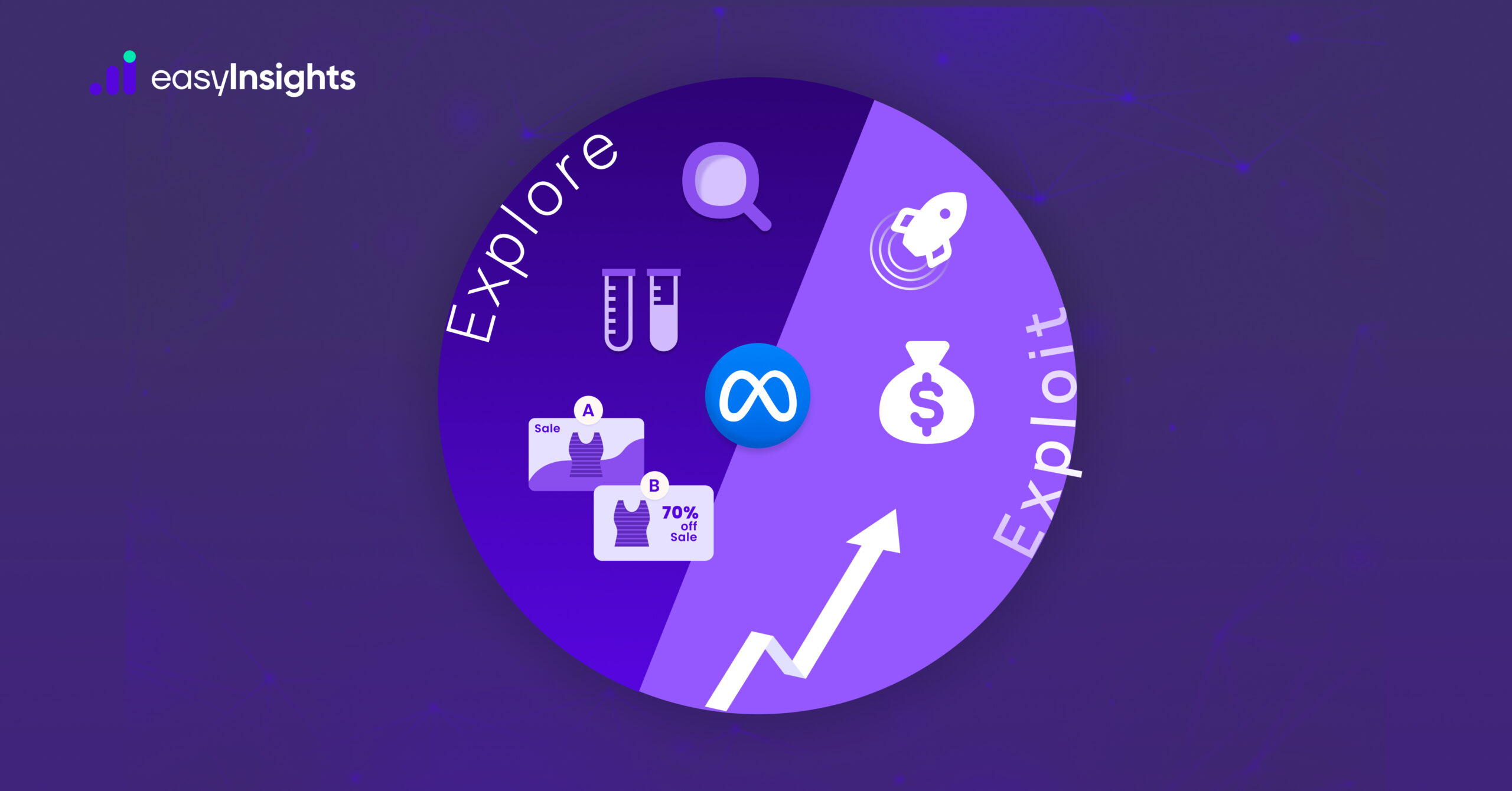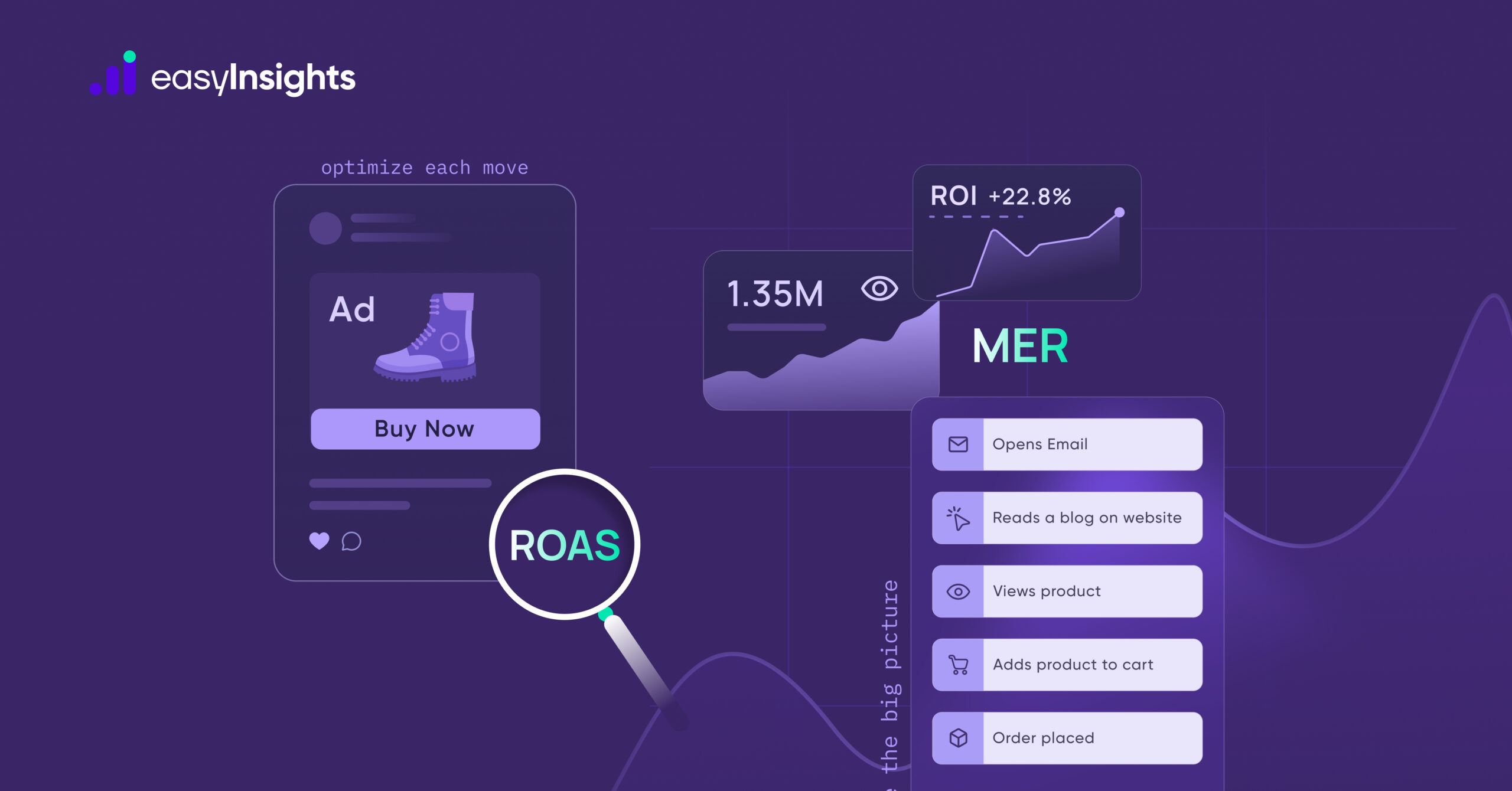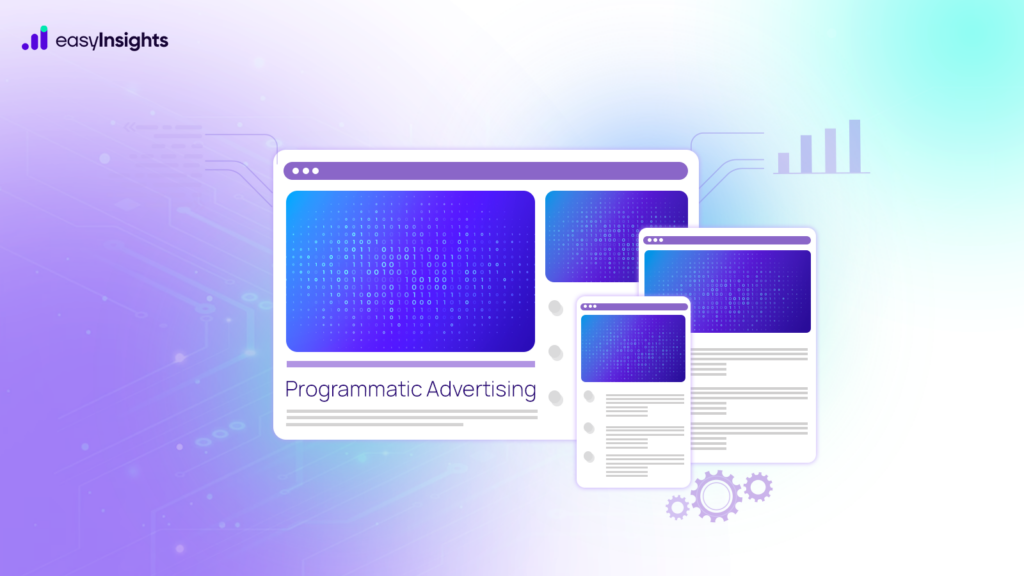
Modern digital advertising uses automation to revolutionize how brands connect with their target audience. Programmatic advertising transforms ad buying through Real-Time Bidding (RTB) and AI-powered solutions and analytical tools that deliver effective ad placements at peak efficiency.
Marketers who adopt Google’s DSP (Demand-Side Platform) experience better-targeting capabilities alongside enhanced operational efficiency and improved return on investment. Modern programmatic facilitates instant ad inventory purchase which simplifies the entire advertising process due to its automated capabilities.
In this blog, we will discuss why programmatic ads are essential for modern advertisers, how they enhance digital advertising campaigns, and why brands must embrace them to stay competitive in the evolving ad space.
Jump ahead to:
What is Programmatic Advertising
Programmatic advertising is a digital ad-buying process that uses automation to purchase and optimize online ad inventory in real-time. It’s powered by technology and data, aiming to deliver the right ads to the right audience at the right time, without the need for direct human intervention.
Advertisers set targeting parameters like demographics, behavior, and interests. The platform then uses real-time data to place ads in the most relevant spaces automatically. By combining real-time bidding (RTB), smart algorithms, and data insights, programmatic advertising boosts campaign performance and helps brands reach high-intent users more effectively.
Its biggest strengths? Real-time optimization, precise targeting, and better ROI, driven by ever-evolving AI technology.
How Programmatic Advertising Works
Here’s a step-by-step breakdown of how programmatic advertising uses automation and AI to streamline ad buying, allowing advertisers to target audiences precisely and display ads efficiently across digital platforms.
1. Data Collection & Audience Segmentation
The first step in programmatic advertising is gathering valuable data from various sources, such as user browsing behavior, demographics, and interactions with the brand.
This data is collected through Data Management Platforms (DMPs), which help build detailed audience profiles. These profiles allow brands to create targeted ads tailored to specific user groups, improving the chances of engagement and conversions.
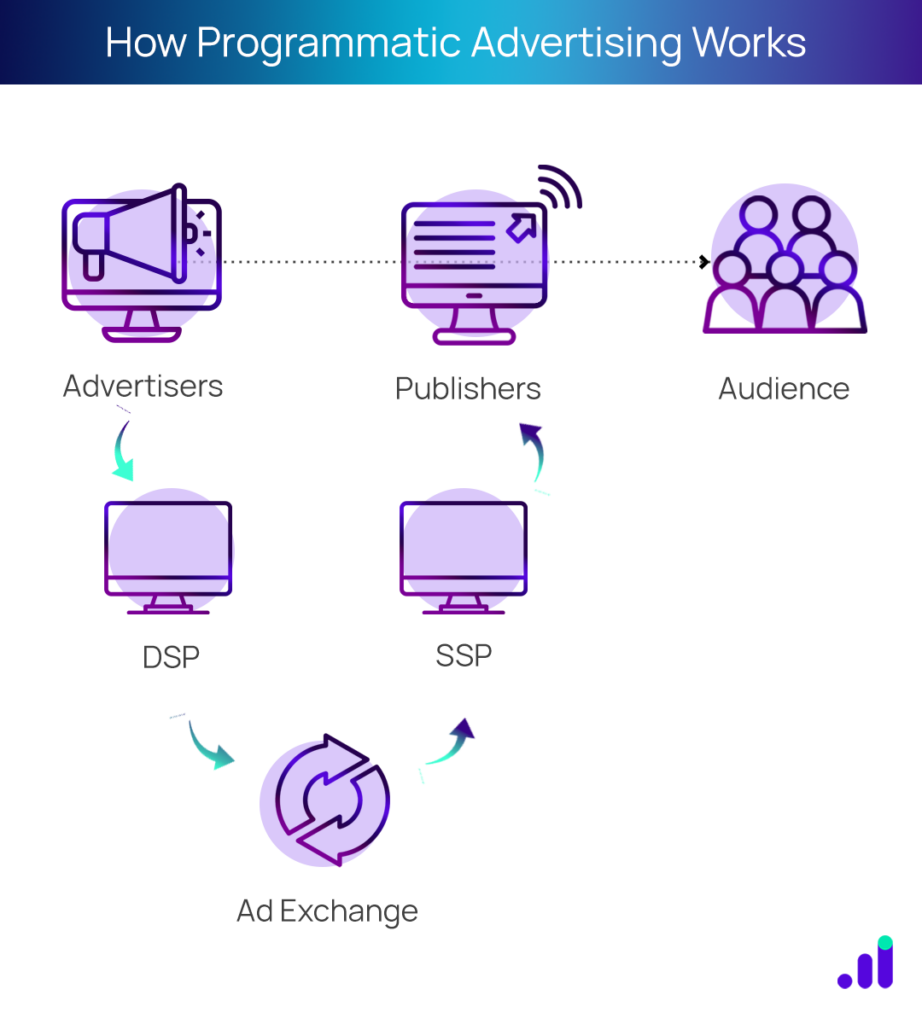
2. Automated Ad Buying & Real-Time Bidding (RTB)
Once the audience is defined, advertisers use Demand-Side Platforms (DSPs) to automate the ad-buying process. Through Real-Time Bidding (RTB).
RTB is an auction which occurs in milliseconds every time a user visits a website or app. Advertisers set parameters such as target audience, budget, and bid price, and the highest bid for the most relevant ad wins the placement. This allows ads to be shown to users based on the most relevant data in real time.
3. Instant Ad Delivery & Continuous Optimization
After the auction, the winning ad is immediately delivered to the user’s screen—this process happens seamlessly and in real-time. Additionally, programmatic advertising platforms continuously monitor campaign performance, providing instant feedback on metrics like engagement and conversions.
Advertisers can adjust bidding strategies, ad creatives, and targeting parameters dynamically, ensuring the campaign remains effective and optimized throughout its duration.
4. Performance Analytics & Data-Driven Insights
Throughout the campaign, detailed data on impressions, clicks, conversions, and other performance metrics are collected and analyzed. These insights provide a deeper understanding of which strategies are working and which need adjustment.
Advertisers use this information to refine future campaigns, improve targeting precision, and enhance the overall return on investment (ROI). With programmatic advertising, brands can continually optimize their efforts, ensuring the most effective use of their ad budgets.
Types of Programmatic Advertising
Programmatic advertising offers various buying methods to suit different campaign needs. Here’s a breakdown of the main types:
1. Open Auction (Real-Time Bidding – RTB)
- The most common type of programmatic advertising.
- Ad spaces are available to all advertisers, and the highest bid wins the placement.
- Works best for scaling campaigns quickly and reaching a broad audience.
- Example: A brand bidding for ad space on a news website through an ad exchange.
2. Private Marketplace
- Similar to an open auction, but only selected advertisers can bid.
- Publishers invite premium advertisers to bid for ad inventory.
- Offers better-quality placements and brand safety.
- Example: A high-end fashion brand getting exclusive access to ad spots on a luxury lifestyle website.
3. Preferred Deals
- A publisher offers ad inventory to a specific advertiser at a fixed price before making it available to others.
- No bidding advertisers get priority access to premium ad spaces.
- Example: A tech company securing top ad placements on a popular gadget review site.
4. Programmatic Direct
- A one-on-one deal between an advertiser and a publisher.
- No auction ads are pre-negotiated and guaranteed to appear.
- Works well for brands needing full control over their placements.
- Example: A streaming service signing a direct deal with a sports website for exclusive banner ads.
Benefits of Programmatic Advertising for Marketers
Programmatic advertising has transformed digital marketing by making ad buying faster, smarter, and more effective. With automation, real-time data, and AI-driven decision-making, advertisers can optimize their campaigns like never before. Here’s how marketers benefit from programmatic advertising:
1. Efficiency & Automation: Saving Time and Reducing Manual Work
Traditional ad buying is slow and manual, which can be time-consuming. Programmatic advertising eliminates these inefficiencies by automating the entire process from selecting the right audience to placing the ad.
- AI-powered ad buying reduces human intervention.
- Automated bidding & placement ensure accurate targeting.
- Faster execution allows marketers to focus on strategy rather than logistics.
2. Real-Time Optimization: Continuous Performance Enhancement
Unlike traditional ads, one of the biggest advantages of programmatic advertising is real-time data tracking and campaign adjustments.
- Adjust bids, targeting, and creatives on the go.
- Optimize ad spend by reallocating budget to high-performing placements.
- Use AI-driven insights to tweak campaigns and improve results.
3. Higher ROI: Cost-effective ad Placements with Measurable Performance
Every marketer wants a better ROI, and programmatic advertising delivers just that. With automated bidding and audience targeting, brands only pay for valuable impressions.
- Real-time bidding (RTB) ensures advertisers don’t overpay for impressions.
- Smart budget allocation allows to spend according to performance.
- Detailed analytics track engagement, and customer behavior, helping marketers plan future campaigns.
4. Better Audience Targeting: Precision with Data
Programmatic advertising removes the guesswork by using data to reach the right audience at the right time. It enables precise retargeting of existing customers and helps discover new ones through advanced targeting.
Contextual and behavioral signals ensure ads are shown to users most likely to engage, driving higher conversion rates through data-driven insights.
Also Read: DV360: The Future of Digital Marketing
Enrich your Data with EasyInsights
Research finds that highly data-driven organizations are 3x more likely to achieve significant improvements in decision-making over those that rely less on data.
As third-party cookies disappear and data privacy regulations tighten, programmatic advertising faces a new challenge: tracking users accurately and optimizing bids effectively. The result? Less reliable targeting and higher customer acquisition costs (CAC).
To stay effective, programmatic strategies must shift toward first-party data – the information collected directly from your users. This clean, enriched first-party data powers smarter audience targeting, real-time optimization, and better ROI across programmatic platforms.
EasyInsights.ai enables this transformation by helping brands collect high-quality, privacy-compliant first-party data. It seamlessly feeds valuable insights—like user behavior and CRM signals—into programmatic ecosystems, enhancing campaign performance and data-driven decision-making.
Conclusion
Programmatic advertising has reshaped digital marketing by making ad buying faster, smarter, and data-driven. With automation, real-time bidding, and AI optimization, marketers can reach the right audience at the right moment across platforms.
To get the most from programmatic, focus on data accuracy, seamless tracking, and continuous optimization—driving better engagement, conversions, and ROI.
EasyInsights.ai supports this with accurate conversion tracking, ensuring ad spend is efficient and measurable. By using first-party data and advanced attribution, brands can deliver personalized ads and understand the true impact of each touchpoint.
Book a Demo with EasyInsights!


